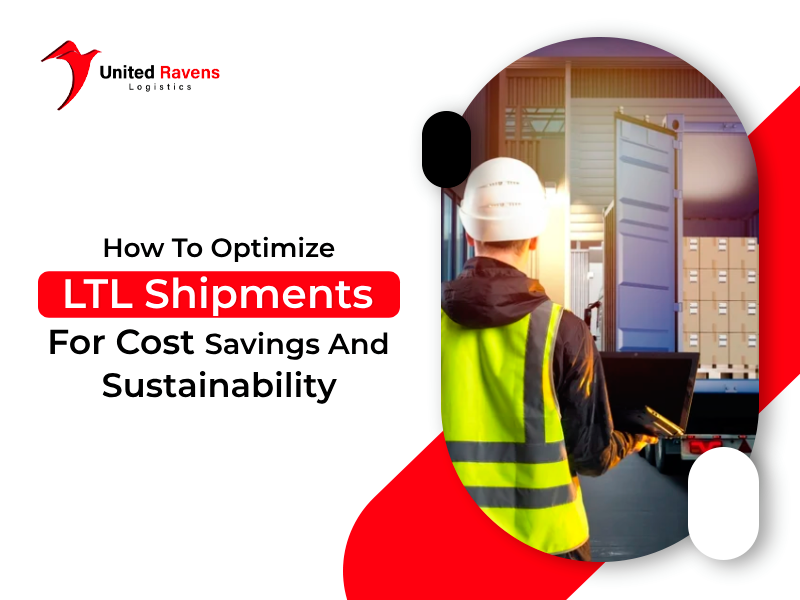Efficiency and flexibility aren’t just advantages; they are necessities in this ever-changing freight forwarding industry. Where every freight means money has the potential for complexity, LTL shipment can save costs and promote sustainability. Less-than-truckload (LTL) shipping has created new opportunities for startup companies and small to medium-sized businesses to deliver their shipments to the right destination. When sending a single package is not sustainable and filling an entire truckload may seem impossible, LTL shipping strikes an ideal balance between shipping less but just enough quantity quickly, easily, and sometimes affordably.
According to ZIPPIA trucking industry statistics, over 72% of the freight by weight in the United States is moved by trucks. Without trucks to move goods across the country, America’s freight and logistics industry would be nothing! So, if you want to ship your goods via truck, your best bet could be LTL shipping. Keep reading to find out more about less-than-truckload shipping.
What is LTL shipping?
“Less-than-truckload” (LTL) shipping is a partnership with moving the right amount of small quantities of goods, dividing the cost of transportation, and minimizing the company’s expenses. LTL freight, unlike traditional full truckload (FTL) shipping, where a single organization pays for all the slots in a track, combines cargo from various shippers into one truck. This kind of freight transportation is projected to notably minimize delivery charges while increasing savings among all parties concerned.
5 Best Tips To Optimize LTL Shipping In 2024
Businesses that want to cut costs for less-than-truckload (LTL) freight shipping must establish efficient shipping processes. Here are some of the best tips that can make delivery faster and support the entire supply chain management at once, along with the necessary statistics in 2024.
Work with Multiple Carriers
The more carriers or shipping partners you work with, the lower the costs, the wider the reach of your business, the more chances you have to use competitive advantage, and so on. The companies can make use of individual carriers’ strengths and have the choice to choose the most profitable and relevant third-party logistics provider for every shipment. They also have the opportunity to enter into contracts with special volumes for particular zones or areas where their clients are customers. They also improve their accessibility and offer different types of delivery, such as next-day, same-day, etc.
Efficient Management of Carriers
Though multiple carrier partners are a good model, it is necessary to have real-time tracking and integrate all operations and people into a single platform at the same time. Smart shipment clubbing, smart routing, and smart carrier choice are the results of the unified intelligence provided for the most efficient LTL planning and orchestration. Additionally, businesses might establish certain parameters for particular delivery companies and send goods according to those parameters; these parameters will open up the possibility of higher cost efficiency.
Evaluate Vehicle Capacity
In some instances, a business will send a different Less than Load (LTL) shipment to the same destination or on the very same route just a few hours or a day apart. So they increase their spending. The loads that have set delivery windows and are less time-sensitive must be combined in order to provide better vehicle output and reduce the number of trips. Equally, companies can tie consignments together for specific routes, particular areas, or destinations so as to reduce LTL expenses.
Monitoring Shipping Closely
A delay in the tracking of shipment movements can lead to an increase in turnaround times as well as a loss of SLA adherence. This might become a cumbersome effort, which is why automated shipment tracking features provided by tech-empowered 3PL service suppliers operate online, offering real-time status reports with details on key milestone events. Hence, the businesses will hold all the shipment tracking details to perfection and make sure they plan for the next shipments accordingly.
Hire a 3PL Partner
If you are looking into providers that are cost-sensitive and multi-carrier, then rating carriers, negotiating rates, surveying customers, and finally consolidating freight may already make you feel overwhelmed. If you use a 3PL partner, you will achieve cost savings and secure a partner that optimizes your transportation at each juncture. Hire a logistics company in the US.
Conclusion
For careers, LTL shipping is a chance to improve their shipping operations in many strategic ways. The advantages of LTL shipments, which include saving costs and being flexible, along with enhancing sustainability efforts, match the difficulties and requirements of today’s retail environment. Through the LTL shipment process in their logistics strategies, career companies can attain not just more effective and affordable operations but also create a stronger and more sustainable brand picture.

